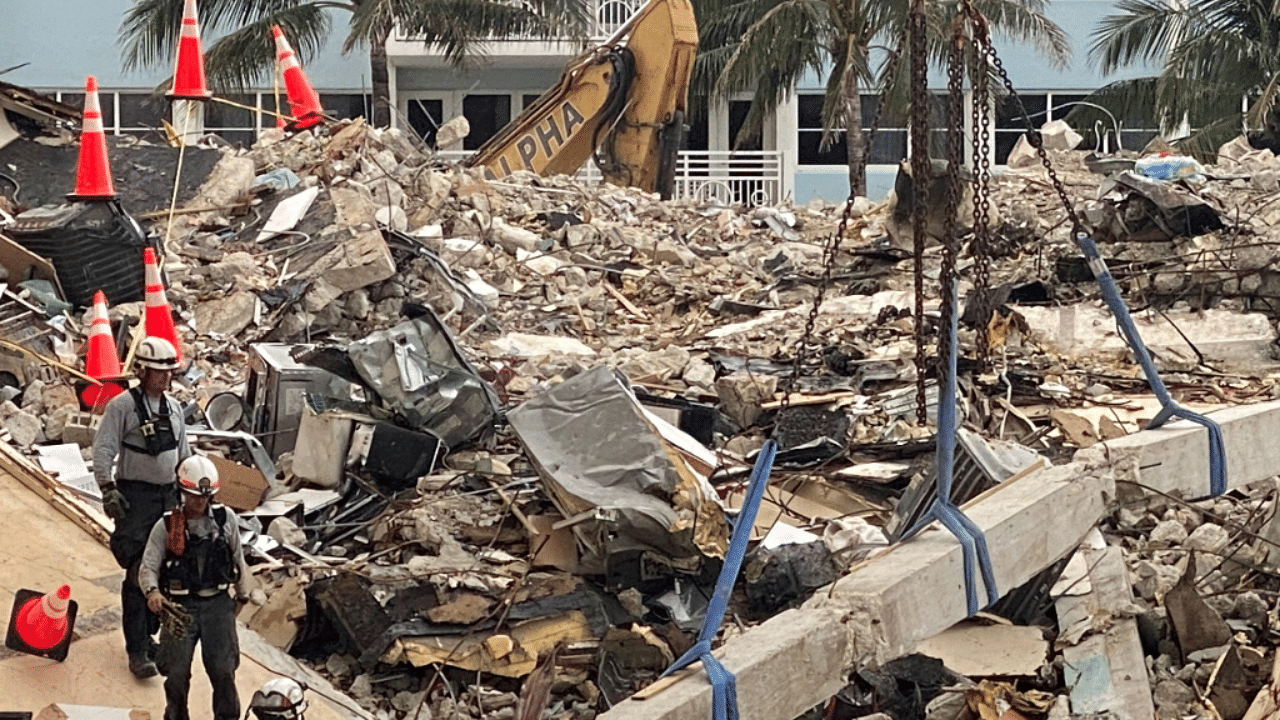
Rising seas threaten the high-rise studded coastline of south Florida, but a professor who researches the white-sand beaches said it is unlikely climate change alone was behind the collapse of an oceanfront apartment block last week.
Officials have few answers for what caused most of the 12-story building in Surfside, Florida to pancake in the middle of the night last week, killing 12 people and leaving 149 unaccounted for. Determining what went wrong is expected to require a lengthy investigation.
The tragedy came as cities in the Miami area are already experiencing the effects of higher tides and announcing expensive efforts to mitigate them, but Stephen Leatherman, a Florida International University professor who specializes in beaches, said there's no evidence yet the phenomenon played a role in the collapse.
"I doubt that that was an issue here," he told AFP during an interview in his Miami home.
Rather, a lack of reinforcement in the building's construction, or perhaps water damage that ultimately compromised its foundations, are more likely culprits, Leatherman said.
"Big thing they worry about here are hurricanes, beach erosion, flooding, all those issues. But the collapse of a building is new. We haven't ever seen this before, particularly a high-rise building," he said.
Before it disintegrated into a mound of grey rubble in mere seconds, the Champlain Towers South was among a string of high-rise buildings extending along the south Florida coastline that's grown denser amid an ongoing property boom.
Building in towns like Surfside situated on Atlantic barrier islands in the hurricane-prone state has unique challenges, says Leatherman, who is also known as "Dr. Beach" for his yearly rankings of the world's best seasides.
"You're usually building on sand," as opposed to the limestone underneath Miami, which is further inland but still low-lying like most everywhere else in Florida, said Leatherman.
Legislation passed in 1982 requires builders to excavate and construct footers underneath the building's foundation — but the collapsed tower block was completed in 1981.
Leatherman also questioned whether contractors installed enough rebar to support the concrete building, and also the quality of the sand required to make the concrete.
US media reported that concerns were raised about the building's state prior to the disaster.
A 2018 engineer's assessment found "major structural damage" in the complex, extending to the concrete slab under the pool deck and the concrete beams and columns in the parking garage.
Fueled by climate change, buildings across south Florida could increasingly see flooding as the rising sea level rise pushes groundwater higher, but Leatherman said that won't be corrosive saltwater — at least not at first.
"That water should still be freshwater, but if it gets saltwater intrusion coming in, then the saltwater can penetrate and start rusting that rebar out, and that's not really good," he said.
Nonetheless, the problem has already become serious enough that it's common to see Miamians kayaking along flooded avenues during the summer rainy season.
In February, the Miami-Dade county government announced it would spend billions of dollars to fight sea-level rise, and last year, the US government had trucks dump sand on Miami Beach to stop erosion that Leatherman said had accelerated due to climate change.
But there's only so much that can be done, and he predicts that expensive high-rise properties could soon have to get used to their bottom stories flooding, while other parts of Miami could end up being abandoned entirely.
"I don't know if we're going to be the new Venice anytime soon, but we're hopefully not the Atlantis," he said.